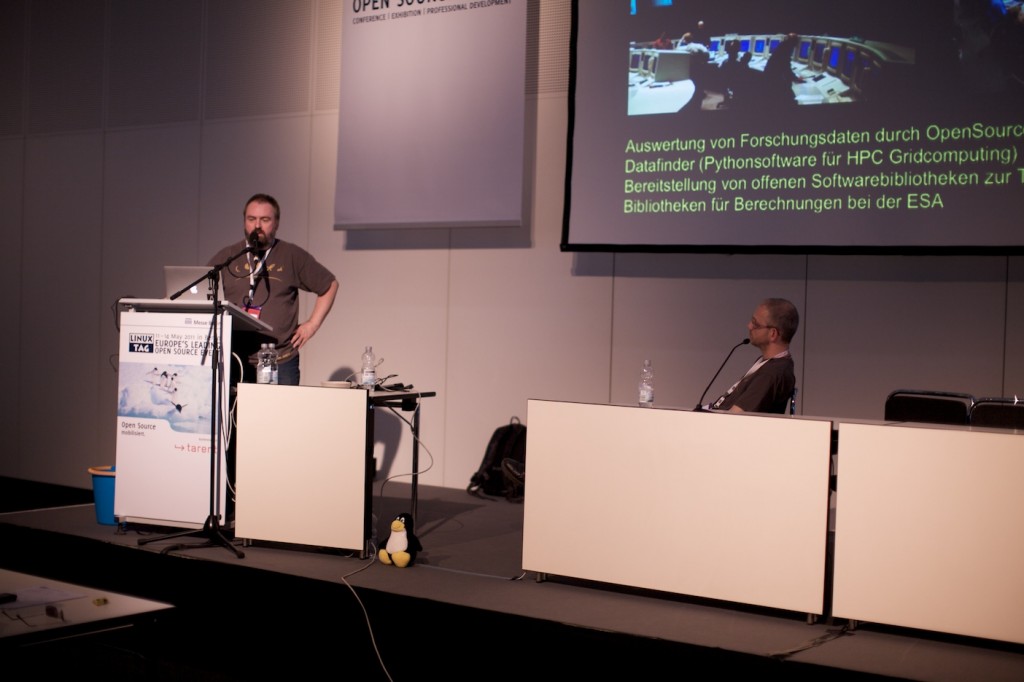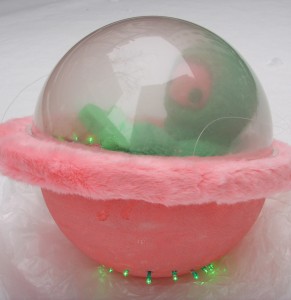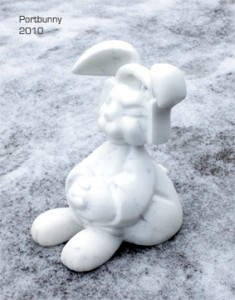Open Moon at LinuxDay 2011 in Berlin
Posted by gps2 | Filed under Education, Event, Rover, Science, Veranstaltungsprotokolle
Dear Moonies,
mars took some nice pictures of our presentation at LinuxDay 2011 in Berlin.
And this is our video pipeline:
Raumfahrt Concret is featuring us!
Posted by gps2 | Filed under Allgemeines, Moon, Rover, Science
The German speaking magazine Raumfahrt Concret, the only one related to space topics publishes in their latest edition an Open Moon paper.
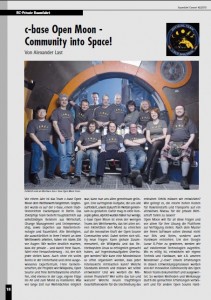 |
Thanks to Raumfahrt Concret for their kindly permission to publish the paper right here.
Lift off for Open Moon Art!
Posted by gps2 | Filed under Event, Science, Veranstaltungshinweise
Open Moon´s Design Commoonity brings art into stratosphere and back.
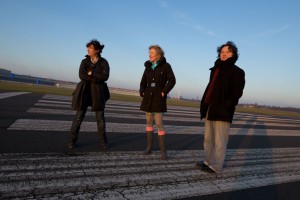 Next Saturday, 11th of December 2010, 4pm, our Open Moon Design Commoonity launches their new ArtProject SPACEgarage.
Next Saturday, 11th of December 2010, 4pm, our Open Moon Design Commoonity launches their new ArtProject SPACEgarage.
SPACEgarage LIFT OFF
launch pad location:
52°29’40.16″N
13°26’33.04″E
Görlitzer Park, Berlin, Germany
Two weather ballons will send SPACEgarage´s artworks into stratosphere. SPACEcapsule and portbunny are the first mascots travelling into low gravity by their own. They will glide back to earth and fortunately return safely to Berlin.
| * |
Lunik & Ranger stay grounded. This time for the testcrew…Sorry, guys!
Mission Executive and Flight Manager is Neven Dološ, Head of c-base Open Moon.
This event ignites SPACEgarage, starting artprojects with scientifical background – A producer´s platform giving stage for exchanging inspiration within scientific minds and visional speculation.
At LIFT OFF Event two analog objects will be set off unusual conditions (for their initial terms ;) and turned over to an unsure welcome. Go for the sky! Return safely! Do you find home? What do you find then?
SPACEcapsule by doris´ microworld
portbunny by Anna Gatjal
Future cooperation with international artists is appreciated.
Acting primarily virtual we are going to open a showroom in 2011.
for comments, questions & request:
dolos@physik-technik.de
Open Moon Activity
Posted by gps2 | Filed under Allgemeines, Event, Rover, Science
Past weeks were busy ones for Open Moon. We ran a booth on LinuxTag in Berlin and a Breakout Session on Future Forum Dresden as well and sent a competent EVA team to the ILA 2010. Our efforts have been rewarded: Commoonities are growing and the project is gaining speed.
Here is our updated official booklet
and some clips and fotos of our events:
A small reel showing the modified moon rover `c-rove´ performing some lunar action. This animation was on display on our booth at LinuxTag 2010 in Berlin and generated a lot of interest.
Open Moon Communicator Alex gives a statement of efforts and outcome of LinuxTag 2010 in Berlin.
Open Moon Design Comoonity is just experimenting with 3D-animations. This is the first test. Please be sure to use anaglyph red(left) cyan(right) glasses to watch this clip correctly.
Open Moon EVA-Team´s visit on Internationale Luft- und Raumfahrtausstellung Berlin
brought us this Photo Album.
“Last, but not least”: A summarize of Open Moon´s Breakout Session “Community into Space” by Ranga Yogeshwar, host of the Future Forum Dresden.
3rd German-Japanese Symposium on Nano Structures (OZ-10)
Posted by gps2 | Filed under Science
Our aerospace engineer Carsten Scharfenberg attended the 3rd German-Japanese Symposium on Nano Structures (OZ-10) in order to gain more information about ALICE, a recent alternative rocket propellant.
Here is Carsten´s report:
As I’m striving towards a bigger understanding on Alice propulsion technologies I attended OZ-10. This is a conference on recent advances in nano technologies organized by ZOZ GmbH – a german company that is a global player in nano materials.
The questions I hoped to get an answer to were: 1. Where to obtain nano aluminum? 2. If it is too expansive: How to produce it on my own? 3. How to deal with the powder itself? Especially: What safety requirements do I have to meet?
I got most of the answers but first of all I will cover the conference itself. It took place in the townhall of Wenden, which is a small town in the german countryside. I planned to arrive one day before the beginning of the conference. Alas, these plans were foiled by the storm “Xanthia” which caused damage to the railway power lines so I was forced to interrupt my journey for one night some hundred kilometers before reaching my destination. Nevertheless participants arrived from all over the world, especially from the far east (there were referees from Japan, Korea, Taiwan and China) – even the US Airforce was present. The main topics of this conference were: surface coatings and new high performance materials in mechanical engineering, in battery storage technologies and in hydrogen storage technologies. The absolute highlight of the conference – from my point of view – was the presentation of Zentallium (by Bayer MaterialScience) which is an alloy of aluminum and carbon nano tubes that is somewhat lighter than pure aluminum but as strong as steel.
I soon figured out that I was exactly in the right place to learn about nano aluminum as some of the attendants had lots of experience with this material. But I also had to hear that I severly underestimated the dangers of nano aluminum. Fresh aluminum surfaces are highly reactive. So if nano aluminum that was produced in an oxygen-free athmosphere is exposed to air it bursts into flames immediatly. This was known to me before, but what I did not know is that even nano aluminum with an oxide layer (so it is stable in air) can cause dust explosions. Also mixing the powder with water is dangerous if the oxide layer is too thin. So it is important to control the thickness of the oxide layer or alternatively the layer of some chemical deactivation agent.
Because of these dangers (and because of its short lifetime) it is not easy to buy nano aluminum. Big companies will only deliver to other big companies or governmental institutions. But it is possible to cheaply buy aluminum powder with a particle size of a few mircrons. This would be a good starting point for further milling to a smaller size. For this purpose we could build a simple ball mill on our own – the only challenge would be to figure out good milling parameters to actually achieve nano sized powder. Nevertheless safety measures have to be applied that can only be met by bigger institutions. So my next goal will be to find support by universities.
